The Hirota Tsumugi Blog
- 2019.04.14
- Yuki Tsumugi’s Silk Handspinning – the World Most Expensive Silk Textile
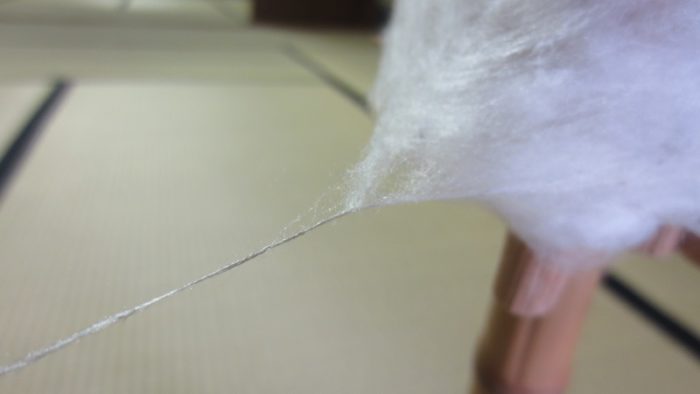
Yuki tsumugi is inscribed for UNESCO intangible cultural heritage. Only Yuki tsumugi and Echigo jofu/Ojiya chijimi are inscribed among Japanese textile traditions so far.
How astonishing about Yuki tsumugi is its hand-spinning process. All of the weft and wrap yarns 100% consist of floss silk handspun yarn.
Amazingly, the yarn is directly pinched off from floss silk by fingers, as you can see the photo below.

For a bolt of Yuki tsumugi (40cm width 1280cm long), approximately 30,000m to 35,000m of the yarn is required. It takes at least 2 months for producing the amount of a kimono bolt.
At even present days, there are about 200 “itotori” handspinning artisans in Ibaraki and tochigi prefecture. However, their average age is more than 75 years old. At the best days around 1970, the number of itotori craftswomen reached 8,000 people.
The finger-pinched silk yarn is totally different from machinery spun silk. By delicately pinching off from floss silk by fingers, without damaging and strongly stretching out silk fibers, it enable to create floss silk like texture into a fabric. The silk texture is literally unparalleled with any other silk textiles in the world.
How the finger-pinched silk yarn is produced?
Cocoons are soften in boiled water with baking soda, and then opened it up and 5 of them are lapped over together. Its sack-like form is called “Mawatabukuro”.
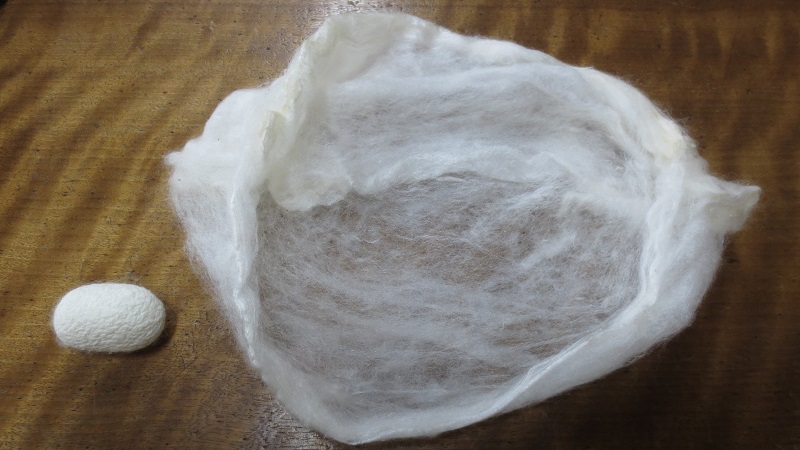
A cocoon (left) / Mawatabukuro (right)
The Mawatabukuro are exclusively produced at Hobara, Hukushima prefecture, which are then delivered to Yuki.

The highest quality Mawata made in Hobara at Fukushima prefecture.
In the hand-spinning process, Mawatabukuro is wrapped around a standing wood stick called “Tsukushi”, and pinch off a yarn by fingers with putting her saliva as to keep moisture. The hand-spinning requires a seasoned experience and high degree of proficiency for spinning the even thinness for the yarn throughout.
The yarn handspun is placed into a wood container called “Oboke”.

Oboke (left) / Tsukushi (right). Tsukushi is made of bamboo stick and corn piths. The traditional tools.
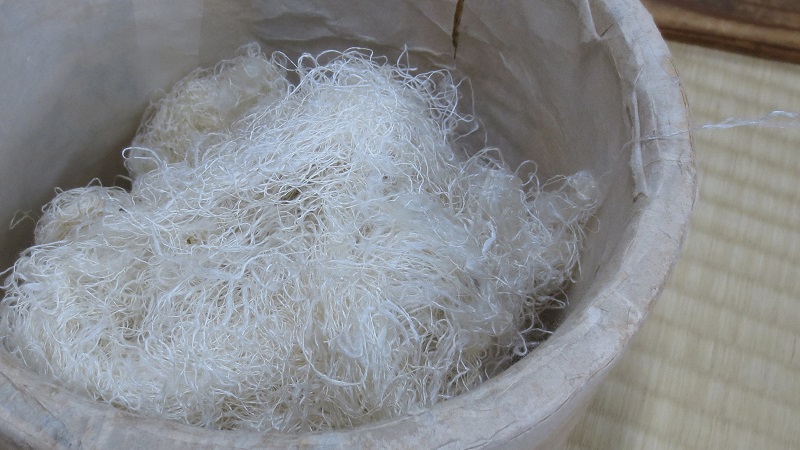
The handspun yarn is carefully put into a Oboke. Looks like the yarn gets tangled, but it doesn’t.
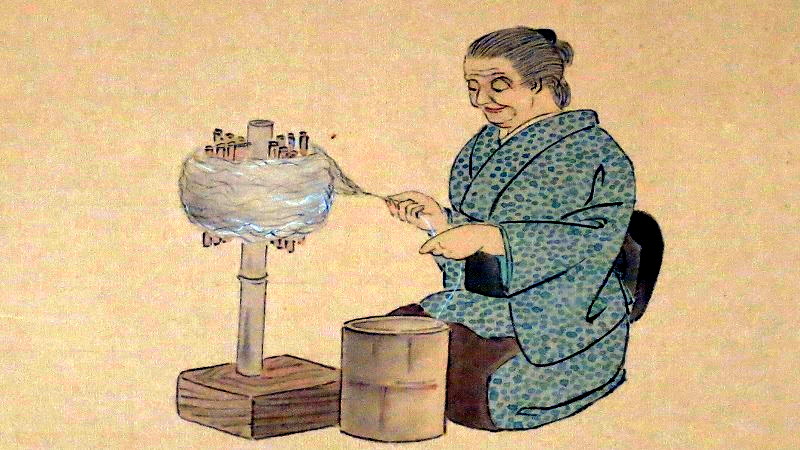
The picture depicting a female artisan hand-spinning with Tsukushi and Oboke. It’s from more than 100 years ago.
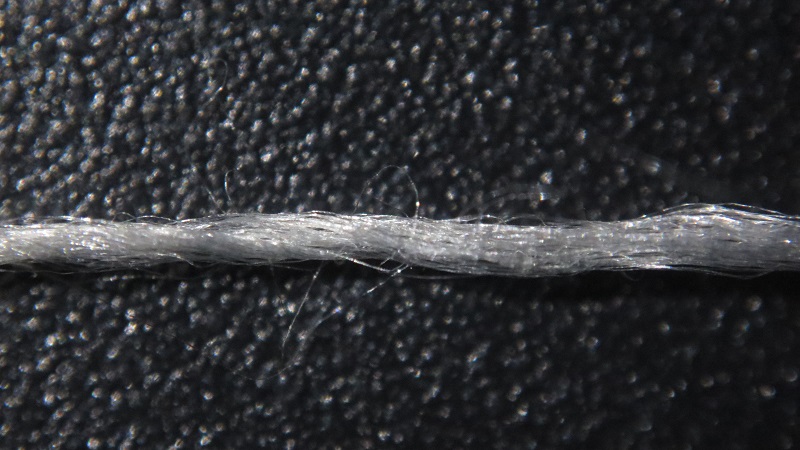
If we look at the yarn closely, we can tell that each fibers are gently bundled, which means that silk fibers are draw out as they are and each fibers are independent. That’s the secret of supremely light texture.
This yarn itself is too fragile to weave, so that it should be starched with flour plentifully before weaving. After it is woven, the fabric is washed by hand in hot water for removing the starch and dry under sunlight (the process is called “Yudoshi”), which finally reinstate the floss silk like texture.
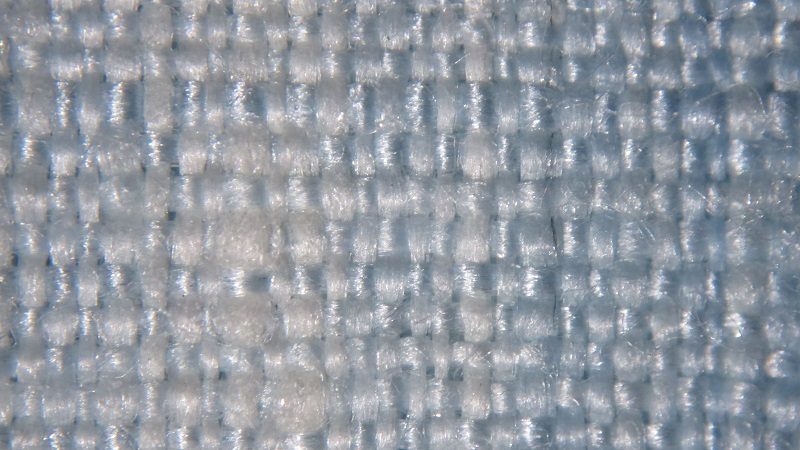
the surface close-up of a Yuki tsumugi, woven with very high density by back-strap loom.
This is the closeup of a newly-woven Yuki-tsumugi. We can see the surface is a little fuzzy with fibers. More you wear, it will get more fuzzy, and more contributing to have the floaty and fluffy texture. Normally kimono fabrics gradually worn thin, more you wear it with damages and stresses. But Yuki tsumugi is very strong fabric woven very tightly by a back-strap hand loom and won’t hardly wear thin. On the contrary to other kimono fabrics, more you wear Yuki tsumugi, more it gets the floss silk like texture as a result of gradually blending the fine fluffs seamlessly with the fabric.
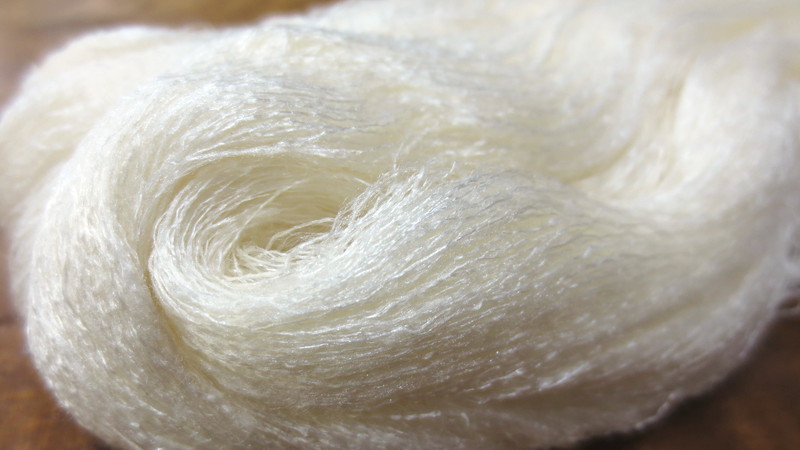
The handspun yarn used for 160 Kikko pattern Yuki tsumugi, which is finer than a normal Yuki tsumugi.
So we have looked at the unparalleled hand-pinched silk yarn of Yuki tsumugi. The hand-spinning process is extremely primitive and inefficient way. 30,000m ~35,000m of the hand-spinning yarn is used for a Kimono bolt. That is overwhelming fact that the length is pinched off by fingers. That is the reason why Yuki tsumugi is far expensive compared with other kimono fabrics because the amount of the work and time for the hand-spinning is reflected.